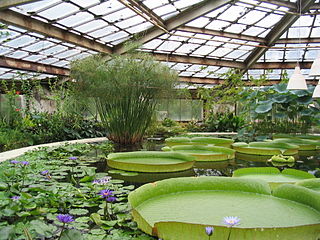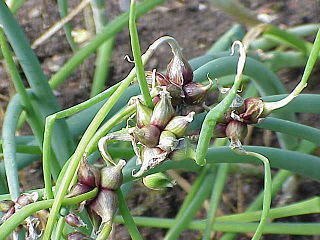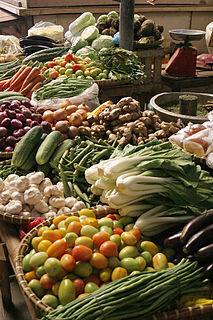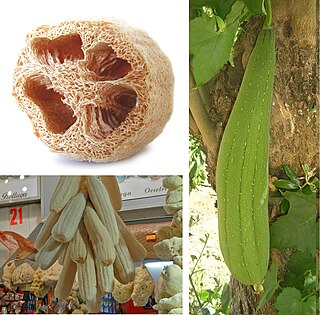This article is written like a manual or guidebook.(August 2015) (Learn how and when to remove this template message) |
Horticulture Netting or Vegetable Support Net
This article is written like a manual or guidebook.(August 2015) (Learn how and when to remove this template message) |
Horticulture Netting or Vegetable Support Net

Starting in the 1960s, in Europe a new rigid mesh and net product made out of polypropylene started being used. The most famous factories were located in England and Italy, given the fact that these two countries where the most advanced in machine tooling and extrusion, then with the passing of time this technology found its way into other parts of the world, and today it is very easy to find who manufactures this type of base product anywhere in the world
Once the semi-finished extruded product is ready (in this phase it is when colors and UV stabilizers are added to the PP mix), the product is passed thru a stretching section, this is where the strength and other mechanical properties are given as the polymer molecules are aligned. The net is first oriented longitudinally in hot water and then transversally in a ramose. The final result is a net with a lot of tensile strength (between 50 and 70 kg per meter) that weighs between 6 and 9 grams per square meter, and a mesh size that may reach up to 30x30 cm according to the technical capacity of the manufacturer.
Smaller mesh sizes (between 10 and 18 cm) are usually used for horizontal tutoring of flowers, especially carnations, mums and snaps, because in floriculture growers prefer an opening that will support vertically the flower without letting it tilt or bend because it would lose its commercial value. Larger sized meshes are preferred for vegetable support. especially cucurbits, solanaceae and legumes. The reason horticulturalists prefer a larger mesh size (which simulates the hand weaved raffia systems) is so one can work the two furrows on both sides of the walking isle, without damaging the crop or the plant during harvesting or trimming work.

Flower support netting is installed in many layers over the flower bed. At the extremes of the furrow a net fastening and support system is installed so that the mesh can be stretched tightly over the growing flowers. In between the two extremities of the flower bed, intermediate supports are necessary as to insure that mesh openings lay on top of each other's symmetrically and layer after layer so that flowers may grow straight.
The great majority of horticultural applications of plant support netting are vertical, even though there are also great horizontal uses. When it is used vertically to provide support to the vegetable trellis, the netting is fastened to a line of posts or supports (metal, bamboo or wood) distanced from 1.5 to up to 8 meters (depending to the type of crop, soil type, climate etc.) where the furrow ends have posts that are larger and stronger and preferably have a tension string or twine on top that is anchored on both sides of the furrow and tensioned in between posts.
Once the posts are installed (in many cases where the farmer decides for a bit of extra support by installing a tension string on the top of the poles) one may proceed with the installation of the trellis netting, unrolling the net from post to post and fastening it both to the post. This task takes about two workers per hectare per day. It is advisable to install the netting before transplanting plants from the nursery trays or just a few days after the seed went in the ground so that plants are not damaged during installation of the support net.
Depending on the type of crop and plant to be trellised one can use netting of many different heights (these vary from 50 cm to up to more than 3 meters for use in greenhouses or shade house). When choosing the height of the vegetable trellis netting one should keep in mind that the net should be installed 30–40 cm above the soil. So a net 1.5 in height will provide a trellis or espalier between 1.80 and 1.90 m (so the post sizes should be around 2.2 and 2.5 m), and this would be the ideal support system measurement for most cucumber open field varieties. The ideal size for square mesh is approx. 25x25 cm.

Inside a greenhouse this netting could be attached to the existing aerial structure and left hanging down to the furrows, this type of installation can call for a net that is 3 meters high, this net size is ideal for many hybrids species. It is also worth mentioning the use of a large mesh tutoring net (for example the 25x25cm size) installed horizontally over tomatoes or peppers in open field, using a support system similar to the one used in flowers. In such a system, the plant grows in between the meshes and the branches loaded with fruits will lean passively over the meshes completely eliminating the need for further labor in fastening and tying operations.


Climate Change is causing many great damages in agriculture. Strong out of season rains are forcing many traditionally "on ground" cultivation methods like the ones used for cucumbers or melons to be now grown on trellises vertically so to improve aeration and solar exposure of the foliage thus reducing the rate of mycosis attacks caused by humidity trapped between the solid and the leaf system, further avoiding direct solid contact of the fruit since this would develop spots on the vegetables thus reducing their market value.
Another important aspect to be considered when deciding the type of plant support for vegetables is the rate of mechanical transmission of viruses (for example mosaic virus) via the hands of the workers. No matter how many precautions a grower may take to keep a high standard of sanitization in the fields (clothes change, washing hands in milk or stepping the shoes on a clorox trap) all one needs to lose control over the virus is for one worker to handle a cigarette or to touch an infected plant to begin the exponential contagion rate in the whole field as if it were any aphids or trips. For this reason, contrary to the raffia tutoring system where a lot of labor is required to tie by hand the plant to the twine during many phases of growth, the use of horticulture netting diminished a great deal for the need of a worker to walk the furrows handling the plants, thus reducing the possibility of spreading the disease.
Cucurbitaceae naturally seek the closest support point, and the netting offers multiple support points for the trellising needs of the plant thanks to the square mesh structure. Also in the case of solanaceae (especially tomatoes or peppers) one can achieve a great reduction of hand labor by installing the net on both sides of the plant (or as a V shape) all along the furrow, creating sort of a sandwich system that holds the plant on both sides, allowing new branches to lean on the mesh without the need to spend money of labor otherwise needed to fasten and tie the plant to the structure.
Each time a plant is handled, pruned or tied to the support system it will cause a few days of stress. During this re-adjustment period, instead of feeding its fruits at full efficiency, the plant will send its nutrients to the foliage so that it can reposition itself efficiently (there are mathematical models that prove the efficiency of the natural leaves alignment to the sun). During the pruning work and manual guidance of the plant, we increase the risk of contagion, especially virus, due to the handling of the workers, whom without knowing, could be transmitting a pathogen mechanically from plant to plant like any harmful insect.
Cultivating the type of determined bushy plants, like eggplant, tomato, chili and peppers, many growers decided to guide/tutor their plants with two "walls" of netting, one on each side of the furrow, therefore creating a growing system where the branches will be supported on their own without any need for manual tutoring. With this system, the lower string of the bottom mesh nearest the soil on one side of the plant is tied gently (leaving about 4–10 cm, 2-4 inches in between the two nets) with the lowest string on the other side (this job is done when the plant is about 40 cm in height, 16 inches). As the plant keeps growing, the distance in between the two walls of net also keeps increasing (30–60 cm) so that each higher branch will be supported by the nearest mesh and be able to reach full vegetative development.
By allowing the plant to grow at 360 degrees, and to fully express its vegetative vigor, it will allow any fumigation to reach vegetable matter and leaves far into the plant mass so that the chemical may attack the targeted pathogens effectively and therefore reduce the recurrence of diseases and further chemical uses.
In most cases trellising net made out of stretched polypropylene is re-usable, and will last many crop cycles. The ideal technique to fully maximize the investment in the agricultural implements from the first cycle, and to amortize this cost over many crops (mulching, irrigation, posts, cables, filters, netting), is to alternate a cycle of solanaceae or cucurbitaceae with one of leguminous or some other nitrogen fixer. Giving for granted that during the previous cycle there had been a good phytosanitary management, and that there are no harmful colonies of pests to the next crop, once may proceed—after the last fruits are harvested—with cutting the old plant still on the tutor net, and while the old plant dries up one may place the seed of the next crop (or wait a few days and transplant directly what comes from the nursery once the old plant matter is removed from the trellis). In a few days the old plant can be easily removed and re-incorporated into the soil.

Polypropylene loses tensile and physical properties once recycled or after a prolonged solar exposure. Virgin polypropylene and a good quality netting will be noticeable from the shines and gloss, while an extruded net containing recycled PP will be opaque and not reflect light as much. Considering crop netting must support the weight of a plant and also resist to natural elements like wind and rain, it is advisable to make sure one pay attention to the product before installing a net that might cause the whole crop to fall to the ground. One more detail to keep an eye on is the color of the netting. White is advisable because it will be visible at all times of the day and prevent accidental cuts during pruning and harvesting, the same cannot be said about black or green nets that will tend to hide among the leaves, stems and fruits.
Growing on a horticulture trellis increases plant density since each plant will find expansion surface vertically on the netting mesh. As the plant grows vertically, besides the already mentioned benefits of increased aeration and sun exposure, the plant´s flowers and fruits are protected from accidental crushing due to the worker walking along the furrows. There is also a greater rate of flower pollination since the flowers are more exposed to insects as leaves will not tend to grow over flowers completely covering them. By taking care of the plant from accidental damages one extends the life span of the plant and the increasing the number of fruits harvested during a longer period.
Crop support net Tomato netting Cucumber net Trellis net Trellising net Trellis netting Flower support net Tutoring net Plant support mesh
ERGONOMIA EN LAS OPERACIONES DE ENTUTORADO DE CULTIVOS EN INVERNADERO ISBN 9788499837192 Poda y entutorado del tomate, Zoilo Serrano, Hojas Divulgadoras, Ministerio de Agricultura

In botany, a fruit is the seed-bearing structure in flowering plants formed from the ovary after flowering.

A greenhouse is a structure with walls and roof made chiefly of transparent material, such as glass, in which plants requiring regulated climatic conditions are grown. These structures range in size from small sheds to industrial-sized buildings. A miniature greenhouse is known as a cold frame. The interior of a greenhouse exposed to sunlight becomes significantly warmer than the external temperature, protecting its contents in cold weather.

Cucumber is a widely-cultivated creeping vine plant in the Cucurbitaceae gourd family that bears cucumiform fruits, which are used as vegetables. There are three main varieties of cucumber—slicing, pickling, and burpless/seedless—within which several cultivars have been created. The cucumber originates from South Asia, but now grows on most continents, as many different types of cucumber are traded on the global market. In North America, the term wild cucumber refers to plants in the genera Echinocystis and Marah, though the two are not closely related.

The radish is an edible root vegetable of the family Brassicaceae that was domesticated in Asia prior to Roman times.

Momordica charantia is a tropical and subtropical vine of the family Cucurbitaceae, widely grown in Asia, Africa, and the Caribbean for its edible fruit. Its many varieties differ substantially in the shape and bitterness of the fruit.

Tree onion, topsetting onions, walking onions, or Egyptian onions, Allium × proliferum, are similar to common onions (A. cepa), but with a cluster of bulblets where a normal onion would have flowers. Genomic evidence has conclusively shown that they are a hybrid of the common onion and the Welsh onion (A. fistulosum). However, some sources may still treat the tree onion as A. cepa var. proliferum or A. cepa Proliferum Group. Tree onion bulblets will sprout and grow while still on the original stalk. They may bend down under the weight of the new growth and take root some distance from the parent plant, giving rise to the name "walking onion." It has been postulated that the name "Egyptian onion" derived from Romani people bringing tree onions to Europe from the Indian subcontinent.

The tamarillo is a small tree or shrub in the flowering plant family Solanaceae. It is best known as the species that bears the tamarillo, an egg-shaped edible fruit. It is also known as the tree tomato, tomate de árbol, tomate andino, tomate serrano, blood fruit, tomate de yuca, tomate de españa, sachatomate, berenjena and tamamoro in South America, and terong Belanda in Indonesia. They are popular globally, especially in Peru, Colombia, New Zealand, Ecuador, Rwanda, Australia, and the United States.

A market garden is the relatively small-scale production of fruits, vegetables and flowers as cash crops, frequently sold directly to consumers and restaurants. The diversity of crops grown on a small area of land, typically from under one acre to a few acres, or sometimes in greenhouses distinguishes it from other types of farming. Such a farm on a larger scale is sometimes called a truck farm.

Chayote, also known as mirliton, choko, tayota, chocho (Jamaica), and chuchu (Brazil), is an edible plant belonging to the gourd family, Cucurbitaceae. Chayote was one of the several foods introduced to the Old World during the Columbian Exchange. Also during this period, the plant spread from Mesoamerica to other parts of the Americas, ultimately causing it to be integrated into the cuisine of many other Latin American nations.

Cucumis anguria, commonly known as maroon cucumber, West Indian gherkin, maxixe, burr gherkin,cackrey, and West Indian gourd, is a vine that is indigenous to Africa, but has become naturalized in the New World, and is cultivated in many places. It is similar and related to the common cucumber (C. sativus) and its cultivars are known as gherkins.

Solanum muricatum is a species of evergreen shrub native to South America and grown for its sweet edible fruit.

Vegetables are parts of plants that are consumed by humans or other animals as food. The original meaning is still commonly used and is applied to plants collectively to refer to all edible plant matter, including the flowers, fruits, stems, leaves, roots, and seeds. The alternate definition of the term is applied somewhat arbitrarily, often by culinary and cultural tradition. It may exclude foods derived from some plants that are fruits, flowers, nuts, and cereal grains, but include savoury fruits such as tomatoes and courgettes, flowers such as broccoli, and seeds such as pulses.

The traditional kitchen garden, also known as a potager or in Scotland a kailyaird, is a space separate from the rest of the residential garden – the ornamental plants and lawn areas. Most vegetable gardens are still miniature versions of old family farm plots, but the kitchen garden is different not only in its history, but also its design.

Cucumber mosaic virus (CMV) is a plant pathogenic virus in the family Bromoviridae. It is the type member of the plant virus genus, Cucumovirus. This virus has a worldwide distribution and a very wide host range. In fact it has the reputation of having the widest host range of any known plant virus. It can be transmitted from plant to plant both mechanically by sap and by aphids in a stylet-borne fashion. It can also be transmitted in seeds and by the parasitic weeds, Cuscuta sp. (dodder).

Sicyos angulatus, the oneseed bur cucumber or star-cucumber is an annual vine in the gourd family, Cucurbitaceae, native to eastern North America. The plant forms mats or climbs using tendrils. The leaves are palmately veined and lobed, the flowers are green to yellowish green, and the fruits form clusters of very small pepos.

Luffa cylindrica, the sponge gourd, Egyptian cucumber or Vietnamese luffa, is an annual species of vine cultivated for its fruit, native to South and Southeast Asia.

Bird netting or anti-bird netting is a form of bird pest control. It is a net used to prevent birds from reaching certain areas.

The use of vine training systems in viticulture is aimed primarily to assist in canopy management with finding the balance in enough foliage to facilitate photosynthesis without excessive shading that could impede grape ripening or promote grape diseases. Additional benefits of utilizing particular training systems could be to control potential yields and to facilitate mechanization of certain vineyard tasks such as pruning, irrigation, applying pesticide or fertilizing sprays as well as harvesting the grapes.
There are many ways to garden in restricted spaces. Often a small or limited space is an issue in growing and cultivating plants. Restricted space gardens can be located on small lawns, balconies, patios, porches, rooftops, inside the home, or in any other available place. Gardening in small places can be applied to edible or floral plants. Growing food has many benefits including saving money; healthier, fresher, and better tasting food; knowledge of pesticide and fertilizer exposure. Gardening is a good form of exercise and has been proven to be therapeutic.

The Celebrity tomato cultivar is a hybrid (biology) that produces long fruit-bearing stems holding 20 or more very plump, robust tomatoes. Fruits weigh approximately 8 oz., and are 4 inches across. Plants need caging or staking, and produce fruit throughout the growing season. The celebrity tomato is a cultivar of the species Solanum lycopersicum. It is a crossbreed of the common tomato that is widely used for various culinary purposes. This tomato is of great size and is known to be resistant to most tomato diseases such as Fusarium wilt, Verticillium wilt, Tobacco mosaic virus and Root-knot nematode due to its hybrid nature. Celebrity tomatoes are highly adaptive to harsh environments and can grow in a wide range of places including dry, humid and wet regions. They are resistant to cracking and splitting which usually occurs when there is an excess of water and sugar movement in the fruits. Therefore, causing the tomato skin to grow at a slower rate compared to the expansion of the fruit. They can survive in harsh uneven rainfall. However, they are highly susceptible to colder environments and are at a higher risk of dying in regions with short growing seasons. The plants can grow up to 5 feet in height with bright red medium-sized fruits. The plants are generally very thick and grow in clusters. The tomato fruits are mostly used in the making of various salsas, salads, juices and canned food.